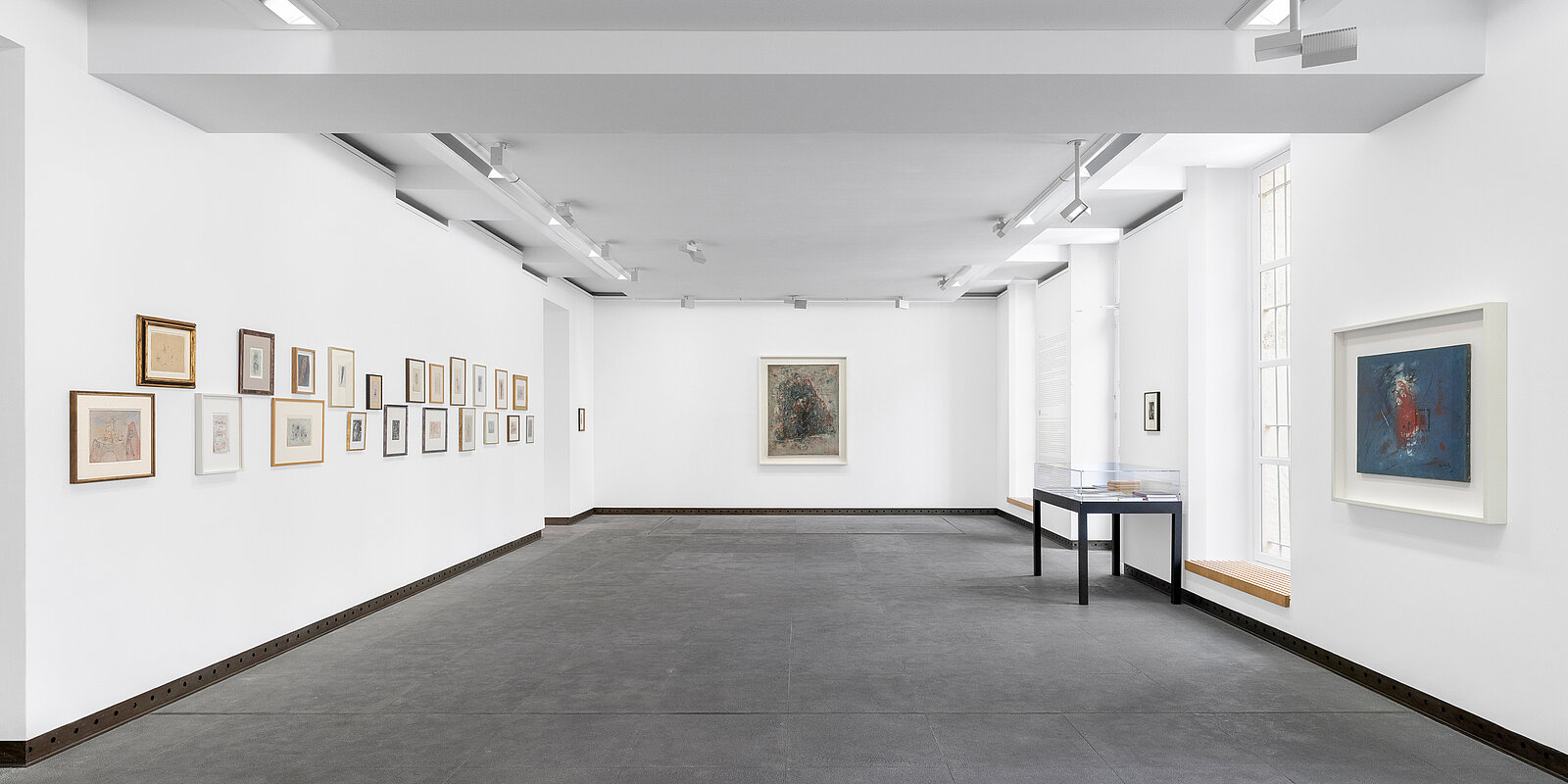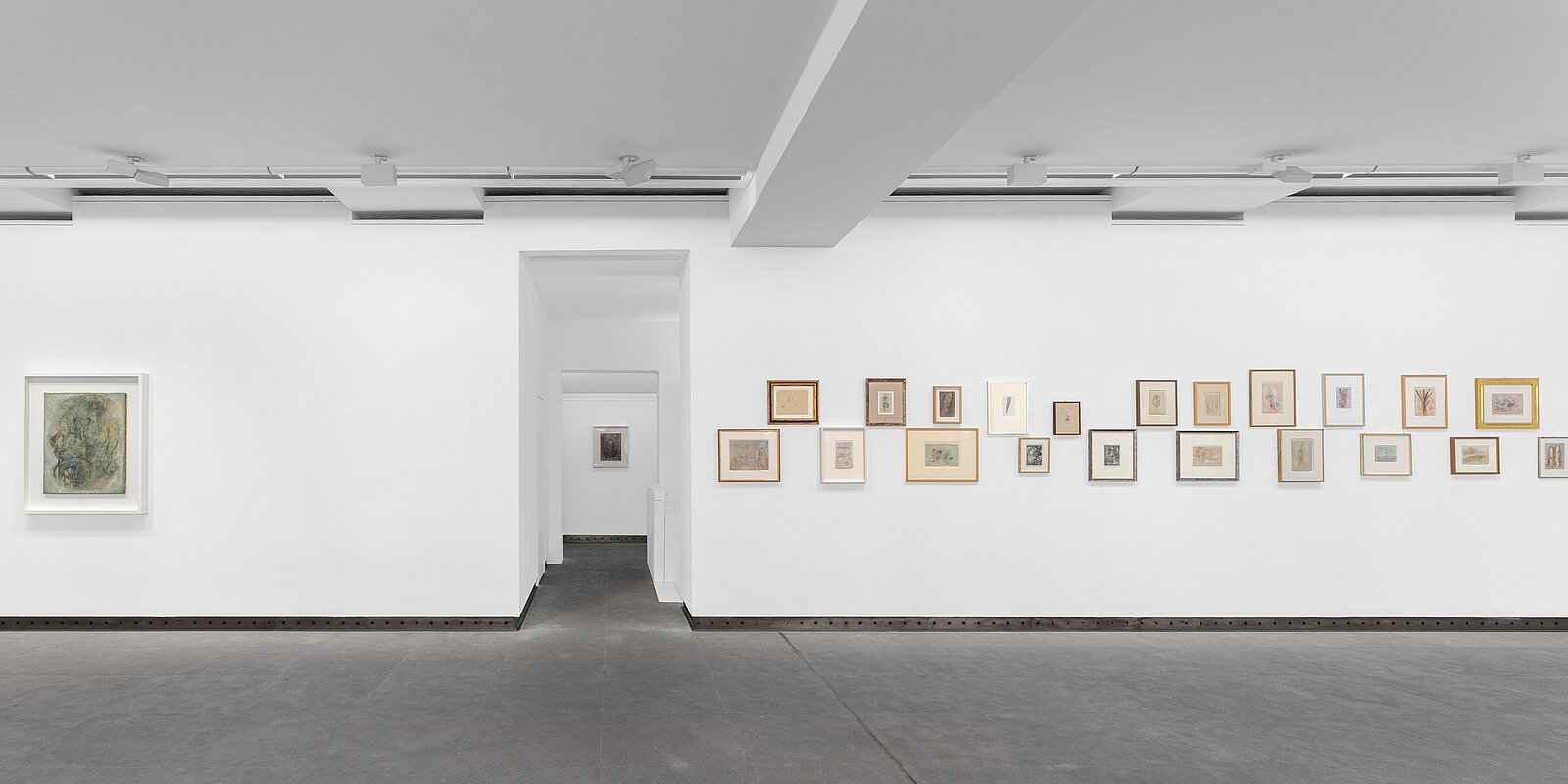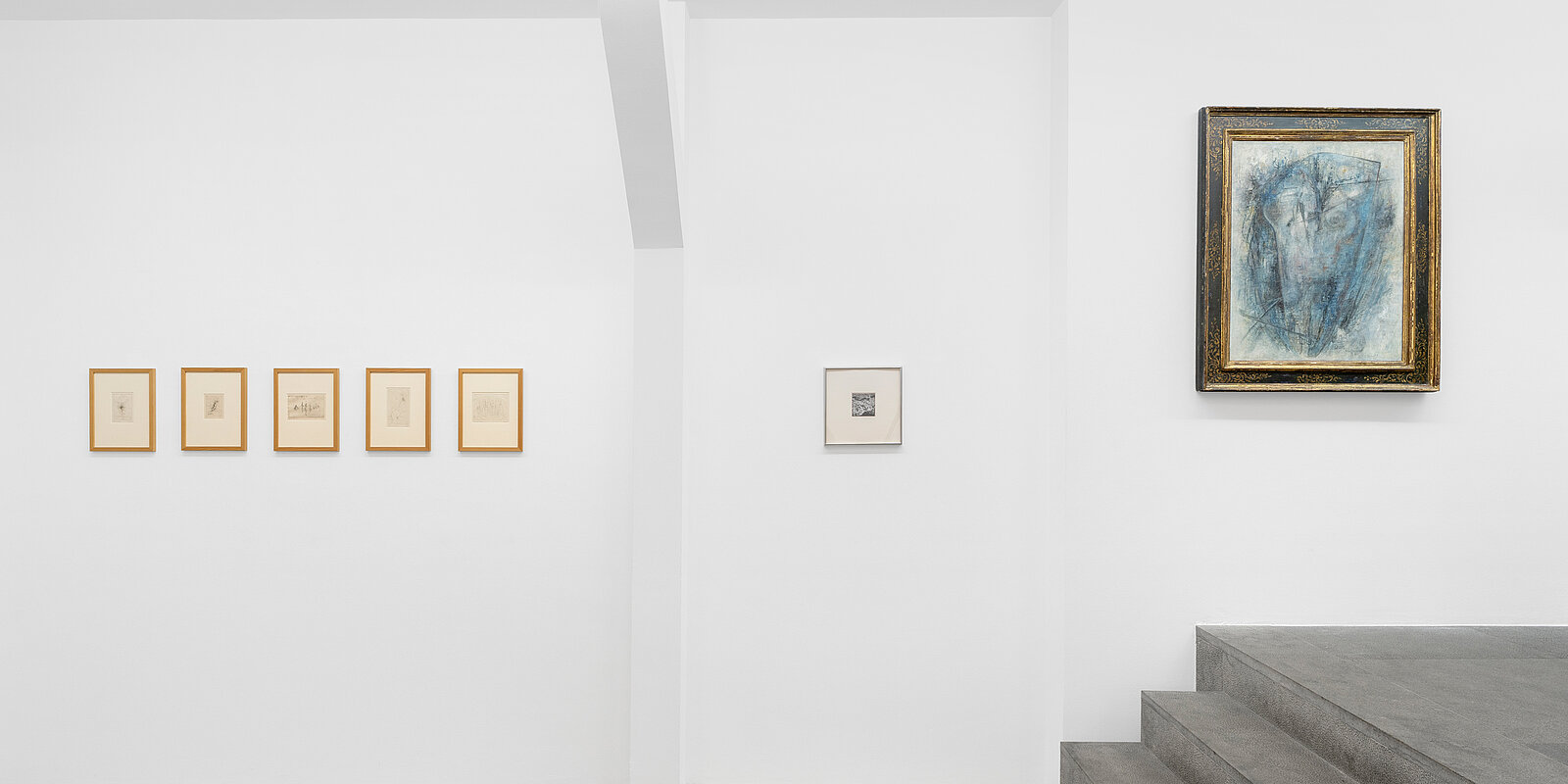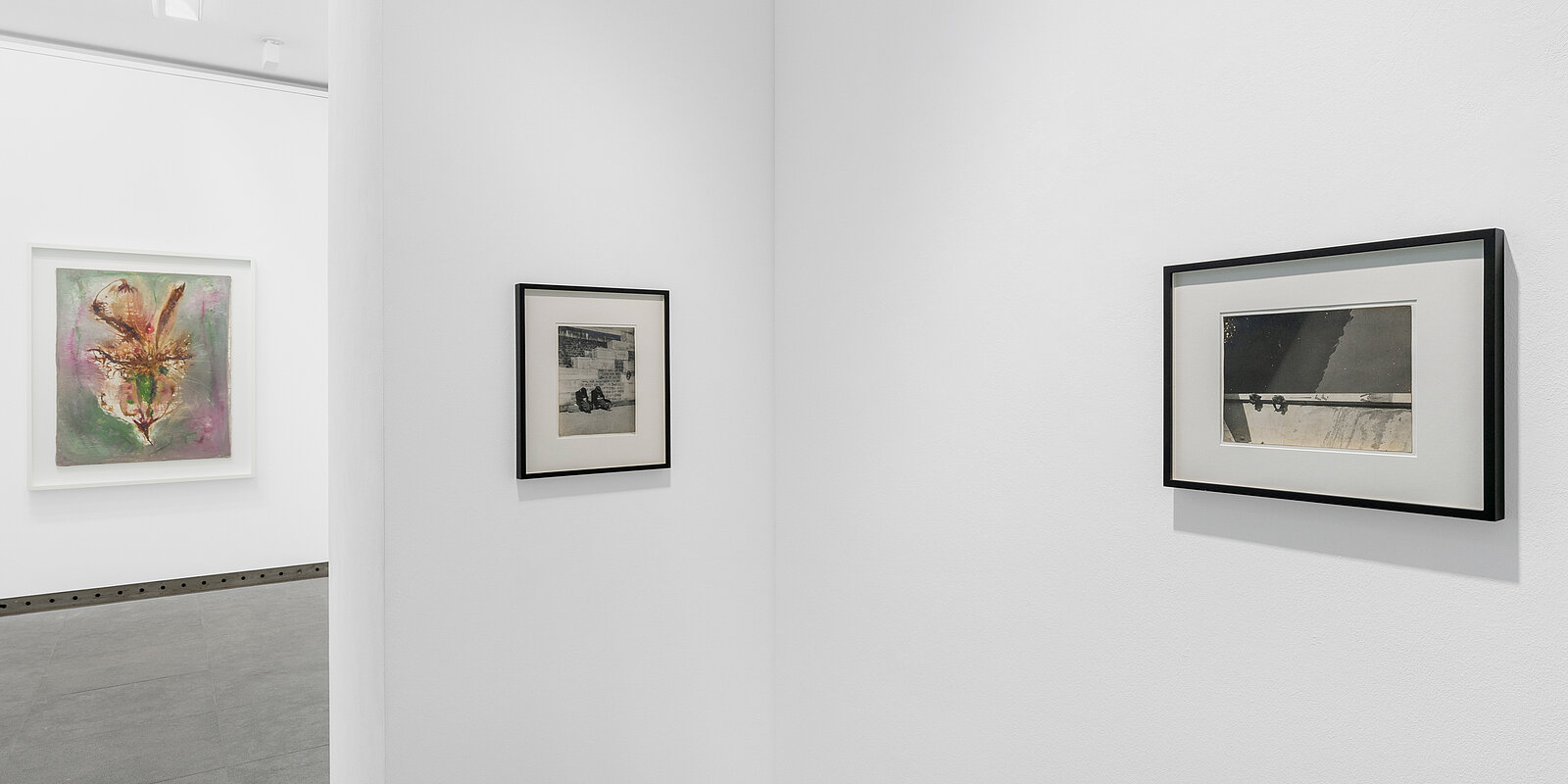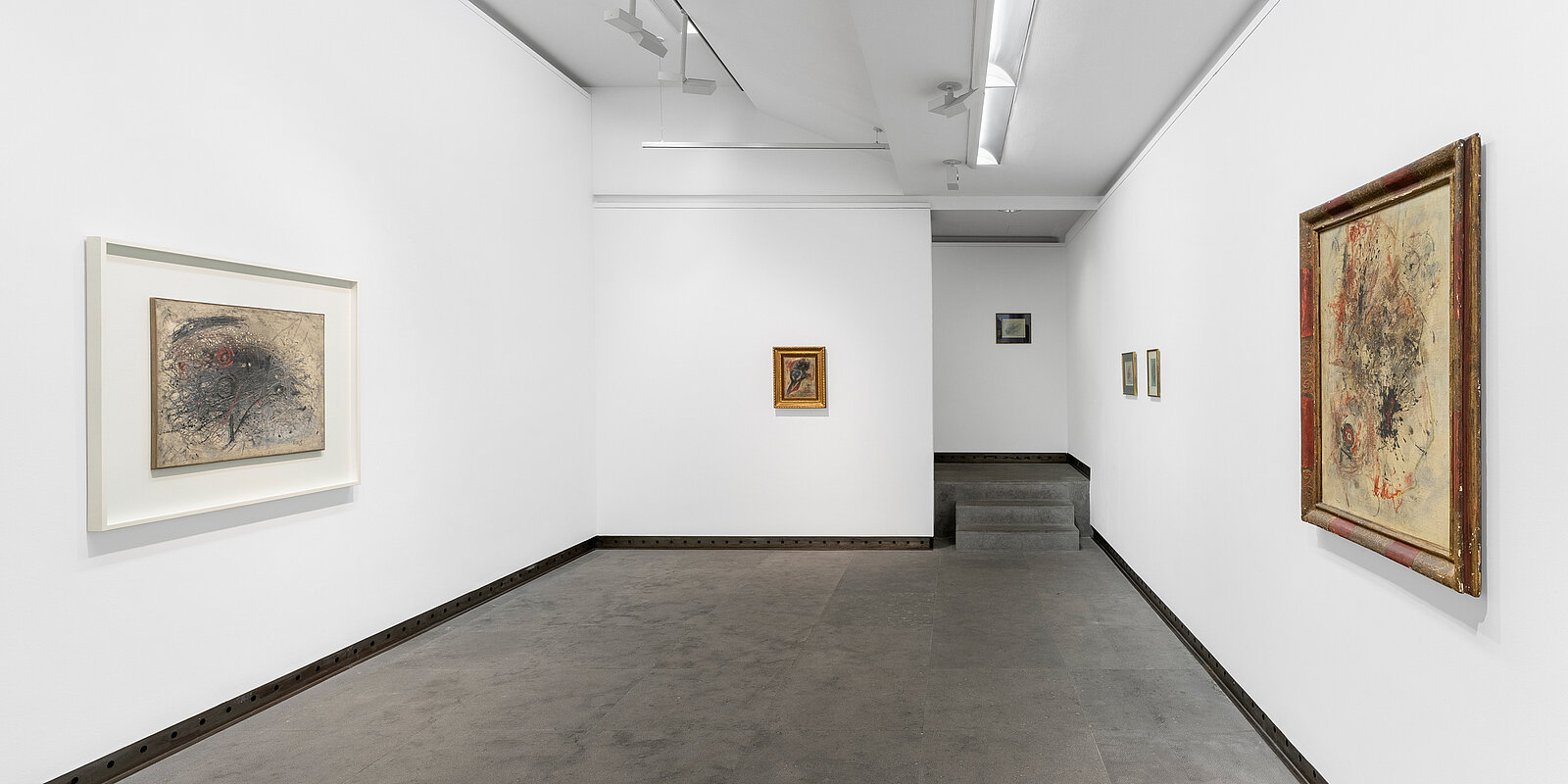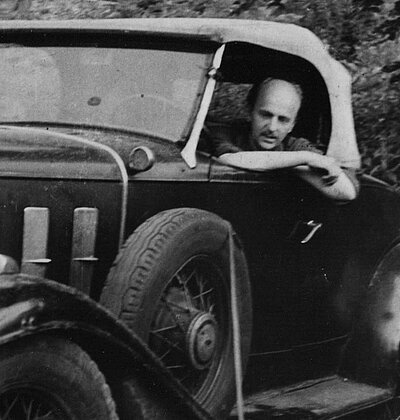Wols:

Galerie Karsten Greve Paris
Tuesday - Saturday 10am to 7pm
Opening on Saturday, May 06, 2023, 6 - 8 pm.
A conference will be held at the gallery at 4:30 pm.
Speakers: Annie Claustres, Annie Cohen-Solal, Judith N. Klein, and Philipp Gutbrod.
“Do not do — be and believe.” - Aphorism 23 (From “Les Aphorismes de Wols”).
Exhibition video, WOLS, Galerie Karsten Greve Paris, 2023
Galerie Karsten Greve is pleased to present a retrospective dedicated to Wols (1913, Berlin — 1951, Paris), which will grace our Parisian location for the first time, twenty-five years after the first exhibition held at our gallery in Cologne. Celebrating the hundred-and-tenth anniversary of the artist’s birth, this exhibition illustrates the importance of Wols’ unique art through the largest collection of works on canvas and paper, photographs, printed works and letters ever assembled in France, from the Karsten Greve collection as well as other major private collections.
“WOLS, a little man from the moon who has landed among us, keeps up his stubborn monologue with the obstinacy of one both loyal and conscientious. His mysterious hieroglyphs, so fine as to challenge spiders, teach us the interplanetary poetry of the stars and reconstruct, under the subtle refractions of their iridescent light, the fauna, flora and even humanities of a dream of invisible microcosms”, wrote Jean Sylveire in 1943. The visionary oeuvre Wols (born Alfred Otto Wolfgang Schulze) created reflects both his time and his life: marked by war and exile and symbolic of ineffable pain in the face of post-war bitterness.
Musician, photographer, artist, poet — the roles Wols took on over the course of his life were manifold, but all attested to a high degree of sensitivity to the world. He arrived in Paris in 1933, fleeing the rising Nazi power in Germany. He then devoted himself entirely to photography and explored the technical possibilities of the medium. The influences of “New Objectivity” and surrealism shine through in his choices of subjects and framing, particularly in the close-ups and effects of contrast and solarisation, similarly to the photographs of his compatriot and contemporary, Ilse Bing. In 1937, he received international recognition for his innovatively framed photographs of the Elegance and Finery ¨Pavilion at the Universal Exhibition and was celebrated with a solo exhibition at Galerie La Pléiade. However, shortly after, the political climate forced him to flee to Spain. With his partner Gréty Dabija, he first went to Barcelona, then Ibiza, and, finally, Mallorca, where he took up watercolours. Arrested in Barcelona, he became stateless, as his German nationality was stripped from him due to his anti-Nazi position.
With the arrival of Nazi troops in Paris in 1940, foreigners — especially Germans — were gathered in internment camps as “enemy subjects”. Upon his return to France, Wols was interned in Camp des Milles near Nîmes. He continued to draw, which became a means of survival for him and the other artists interned alongside him such as Max Ernst and Hans Bellmer. During his internment, he developed Circus Wols, a project conceived as an educational and democratic show accessible to all, using the best technologies to meld popular and scholarly culture, art, music and cinema. Resembling a Gesamtkunstwerk (total artwork), Circus Wols was to help him obtain a visa for the United States; however, he was not able to board the last boat to Marseille. Although only a few notes, schematics and watercolours of that oeuvre are left, such as Sans Titre (“Untitled”), dated around 1940, Wols’ curiosity about shows and cinema attested to his desire to offer a new kind of art. With its intentionally fragmented structure and the artist’s refusal to put forward a meaning or long speech, Circus Wols was a practically dystopian project that foreshadowed post-modernism and showbiz society.
When he left Camp des Milles in 1941, Wols became “imperceptible and clandestine in a motionless journey”. His despair in the face of war and his fear of the authorities brought him to Dieulefit in Drôme, where he led a semi-clandestine life until the end of the war. He concentrated on his drawings and poems, escaping reality through his dreams and alcohol. In his Aphorisms, he expressed his desolation regarding the human condition and the ravages of war. It was also perceptible in his watercolours, which teem with details, between abstract compositions and imaginary worlds. The infinitely large becomes infinitely small; his penmanship offered him a meticulous accuracy that spawned microcosms of organic and urban elements enhanced by ink and watercolours. From weightless towns to a flotilla of dream boats, Wols built a utopia that enabled him to brave reality.
Most of Wols’ paintings were created as late as 1945, with the support of the gallerist René Drouin, who was introduced to him by the writer Henri-Pierre Roché. René Drouin provided him with oils and canvases and exhibited his works in his gallery in Place Vendôme. Despite the disastrous post-war context, the exhibition sparked a keen interest among the artistic and literary spheres of Paris, making Wols one of the major figures of the new world. Wols produced fewer than a hundred paintings. They represent a tumultuous pandemonium through increasingly abstract compositions in which technique and matter set the tone. In 1946, he grew close to Jean-Paul Sartre and Simone de Beauvoir, whom he met in Saint-Germain-des-Prés. Le Tourbillon (“The Whirlwind”), an enigmatic painting from 1947, uses a succession of circular brushstrokes to portray the existentialism that was then taking hold of Paris, the layers of paint corresponding to layers of thoughts. The explosion and entropy of the organic elements in his pictorial language suggest a new definition of life, a new Weltanschauung (metaphysical world view), in which disintegration can be felt more than ever, similarly to the blasted colours in Sans titre (“Untitled”), 1946-1947, or the frantic dispersion in Vert cache rouge (Le Grand Orgasme) (“Green hides red (The Great Orgasm)”), dated around 1947. L’Inachevée (“The Incomplete”), his last painting, carried out in 1951, stands out through both its colours and its ambitious pictorial composition, inspired by nature and carefully constructed by Wols, while still maintaining tension between the abstract and the figurative.
“The old painters went from meaning and found signs for it, but the new ones go from signs that need only to be given a meaning”. So said Jean Paulhan in 1962 as he conceptualised the new turning point for art. Often associated with the Art Informel movement defined by Michel Tapié in 1963, Wols was a key figure in the new post-war school of thought. He was able to conserve his Kunstwollen, or desire for art, despite the torments of war. As a solitary person who preferred the infinite freedom of his own imagination, he always stayed on the fringes of contemporary artistic groups and movements. Wols, the little man from the moon, transcended every category and stood for freedom — that of thinking and, quite simply, of being.
Alfred Otto Wolfgang Schulze, known as Wols, was born in Berlin in 1913 to a family of senior civil servants. When his father was named Chancellor of Saxony, they moved to Dresden, where Wols was introduced to many major artists including Paul Klee, Otto Dix and Oskar Kokoschka. He was a musician and played the violin and the banjo. He refused to join Fritz Busch’s orchestra in Dresden, but music was an essential part of his life for as long as he lived. He spent time at the Afrika Institut in Frankfurt, where he studied ethnology and botany, then did work experience at the Mercedes factory. After being introduced to photography under the guidance of Genga Jonas, Wols did a stint at the Bauhaus in Berlin and arrived in Paris in 1933. He met Gréty Dabija, whom he married in 1941 to get out of the internment camps. Defended by the artists and writers of the Parisian intelligentsia, Wols stayed in France, despite the authorities’ wariness of “foreigners”, and continued to develop his artistic corpus until his death in Paris on 1 September 1951, at the age of 38. From the end of the 1940s, he was included in the founding exhibitions of lyrical abstraction. In 1951, Wols’ work was exhibited alongside that of Jackson Pollock, marking the historical encounter between the French and American non-figurative schools. His work was shown at the Venice Biennale in 1958 and the documenta in Kassel in 1964. In 1974, the Musée d’Art Moderne de Paris paid tribute to his oeuvre with a grand retrospective, which was followed, in 1989, by one of the largest joint exhibitions held by Kunsthaus Zürich and Kunstsammlung Nordrhein-Westfalen in Düsseldorf. In 2013, the Menil Collection in Houston dedicated a major retrospective to him and was followed by the Centre Pompidou in Paris in 2020. His works grace the vastest collections in the world, including those of the MoMA and The Met in New York, the Menil Collection in Houston, the Tate galleries in London, the Nationalgalerie in Berlin, the Kunstmuseum Basel and the Centre Pompidou in Paris.
